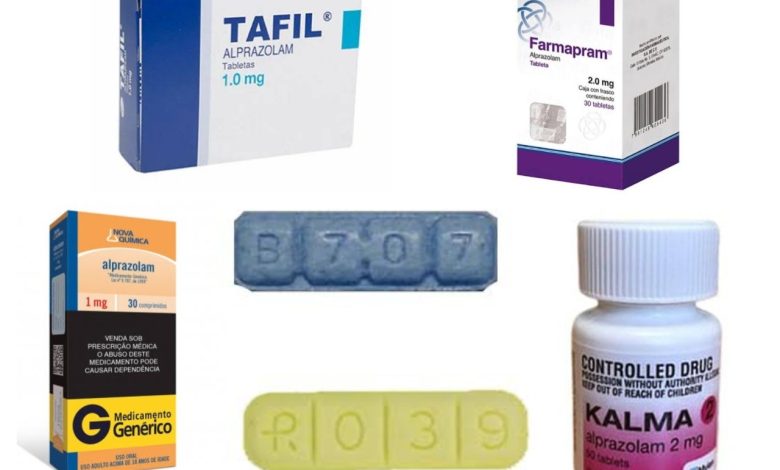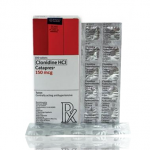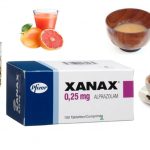Xanax Generics List (Names and Brands)

What are generic drugs?
The United States Food and Drug Administration defines a generic drug as a medication created to be the same as an already marketed brand-name drug in dosage form, safety, strength, route of administration, quality, performance characteristics, and intended use. These similarities help to demonstrate bioequivalence, which means that a generic medicine works in the same way and provides the same clinical benefit as the brand-name medicine. In other words, you can take a generic medicine as an equal substitute for its brand-name counterpart.
Any generic medicine must perform the same in the body as the brand-name medicine. It must be the same as a brand-name medicine in dosage, form and route of administration, safety, effectiveness, strength, and labeling (with certain limited exceptions). It must also meet the same high standards of quality and manufacturing as the brand-name product, and it must be and quality, taken and used in the same way as well. This standard applies to all generic medicines.
Generic medicines use the same active ingredients as brand-name medicines and work the same way, so they have the same risks and benefits as the brand-name medicines. The FDA Generic Drugs Program conducts a rigorous review to ensure generic medicines meet these standards, in addition to conducting inspections of manufacturing plants and monitoring drug safety after the generic medicine has been approved and brought to market. Currently 90 percent—9 out of 10—of all prescriptions dispensed in the United States are for generic drugs.
What is Xanax?
Xanax (the most popular brand-name version of the medication generically called alprazolam) belongs to a class of medications called benzodiazepines. These are central nervous system depressants that work on the brain’s gamma-aminobutyric acid (GABA) receptors to reduce calm excitability and reduce anxiety.
Xanax was first released in 1981 by Michigan pharmaceutical manufacturer Upjohn (now a part of Pfizer) as a panic disorder medication. It became extremely popular because it relieves anxiety quickly.
With over 50 million prescriptions written every year, Xanax is still among the most commonly prescribed antianxiety drugs in the U.S. Unfortunately, that also makes it one of the most abused. Xanax as initially assumed to have little potential for abuse. The dangers of addiction and withdrawal only became clear after both use and abuse were widespread. Legally, Xanax is a Schedule IV controlled substance due to its potential for abuse and addiction.
Xanax Generics List
Here is a full list of 30 generic Xanax brands currently on the market globally:
1. Adco-Alzam
2. Aloram
3. Alprax
4. Alprox
5. Anxirid
6. Apo-Alpraz
7. B707 Xanax
8. Calmax
9. Farmapram
10. Frontal
11. Frontin
12. Gerax
13. Helex
14. Kalma
15. Kinax
16. Neurol
17. Noten Alprazolam
19. Novo-Aloprazol
20. Nu-Alprax
21. Nu-Alpraz
22. Restyl
23. Tafil
24. Tempus Alprazolam
25. Teva-Alprazolam
27. Trankimazin
28. Xanor
30. Zopax
Are the side effects of Xanax and generic brand the same?
Yes, the side effects of Xanax and generic brand are the same. More common side effects in people taking either medication for generalized anxiety disorder include:
- drowsiness
- feeling lightheaded
- dry mouth
- low blood pressure
- increased saliva production
More common side effects in people taking Xanax or generic brands for panic disorder include:
- drowsiness
- fatigue (low energy)
- changes in appetite
- irritability
- trouble with balance and coordination
While these are the most common side effects of Xanax and generic brands, they may not happen to you.
What are the mild side effects of Xanax and generic brands ?
Xanax and generic brands can cause mild side effects. The kinds of side effects you can have may vary depending on the condition you’re using Xanax and generic brands to treat.
Examples of mild side effects that have been reported with Xanax and generic brands when used for generalized anxiety disorder include:
- drowsiness
- feeling lightheaded
- dry mouth
- low blood pressure
- increased saliva production
- dermatitis (inflammation of the skin) or skin allergy
- dizziness
- trouble staying still
- mild allergic reaction*
Examples of mild side effects that have been reported with Xanax or generic brands when used for panic disorder include:
- drowsiness
- fatigue (low energy)
- irritability, rage, or aggressive behavior
- memory loss
- changes in appetite
- trouble speaking
- changes in sex drive
- skin rash
- confusion
- menstruation disorders, such as heavier periods or painful cramping
- trouble urinating
- trouble with balance and coordination
- changes in weight*
- constipation*
- mild allergic reaction*
In most cases, these side effects should be temporary. And some may be easily managed. But if you have any symptoms that are ongoing or bother you, talk with your doctor or pharmacist. And do not stop taking Xanax or generic brands unless your doctor recommends it.
Xanax and generic brands may cause mild side effects other than those listed above. See the drug’s prescribing information for details.
Note: After the Food and Drug Administration (FDA) approves a drug, it tracks side effects of the medication. If you’d like to notify the FDA about a side effect you’ve had with Xanax, visit MedWatch.
What are the serious side effects of generic Xanax brands?
Serious side effects have been reported with Xanax and generic brands. These include:
- seizures
- hallucinations
- liver problems
- risk of severe harm or death if taken with opioids*
- risk of withdrawal and dependence*
- risk of misuse and addiction
- severe allergic reaction
If you develop serious side effects while taking Xanax or generic brands, call your doctor right away. If the side effects seem life threatening or you think you’re having a medical emergency, immediately call 911 or your local emergency number.
Does generic Xanax brands interact with other drugs in the same way?
Yes, generic Xanax brands interact with other drugs in the same way as Xanax. Generic Xanax brands can interact with several other medications. It can also interact with certain supplements as well as certain foods.
Different interactions can cause different effects. For instance, some interactions can interfere with how well a drug works. Other interactions can increase side effects or make them more severe. Drug-condition interactions can also cause certain effects. For information about these interactions.
Below is a list of medications that can interact with generic Xanax brands. This list does not contain all drugs that may interact with generic Xanax brands.
Before taking any generic Xanax brands, talk with your doctor and pharmacist. Tell them about all prescription, over-the-counter, and other drugs you take. Also, tell them about any vitamins, herbs, and supplements you use. Sharing this information can help you avoid potential interactions.
If you have questions about drug interactions that may affect you, ask your doctor or pharmacist.
Types of drugs that can interact with generic Xanax brands include:
- Opioids. Opioids are powerful drugs that are also known as opiates or narcotics. They include strong prescription pain relievers and certain illegal drugs. Taking generic Xanax brands with opioids can lead to severe harm and, in rare cases, death.* Due to these risks, doctors will typically not prescribe Xanax with opioids unless there are no other suitable treatment options. Examples of opioids include:
- buprenorphine (BuTrans, Sublocade, Belbuca)
- buprenorphine/naloxone (Suboxone, Zubsolv)
- fentanyl (Subsys, Lazanda, Fentora, others)
- heroin†
- hydrocodone (Hysingla ER)
- methadone
- morphine (MS Contin)
- oxycodone (Oxycontin, Xtampza ER, Oxaydo, others)
- oxycodone/acetaminophen (Oxycet, Percocet)
- tramadol (Ultram, Conzip)
- Strong CYP3A inhibitors. Taking Xanax with drugs that are strong cytochrome P450 3A (CYP3A) inhibitors can increase the risk of side effects from Xanax.‡ Due to this risk, doctors typically will not prescribe Xanax with strong CYP3A inhibitors, except ritonavir (Norvir). Examples of these drugs include:
- clarithromycin
- ketoconazole
- itraconazole (Sporanox, Tolsura)
- Weak or moderate CYP3A inhibitors. Taking Xanax with drugs that are weak or moderate CYP3A inhibitors can increase the risk of side effects from Xanax.‡ If you need to take Xanax with one of these medications, your doctor will likely prescribe a Xanax dosage that’s lower than usual. Examples of weak or moderate CYP3A inhibitors include:
- cimetidine (Tagamet HB)
- erythromycin (Eryc, Ery-Tab, others)
- fluvoxamine (Luvox)
- nefazodone
- Strong CYP3A inducers. Taking Xanax with drugs that are CYP3A inducers can make Xanax less effective. Examples of these drugs include:
- carbamazepine (Tegretol, Carbatrol, Equetro, others)
- phenytoin (Dilantin)
- Ritonavir. Ritonavir (Norvir) is a drug used to treat HIV. Ritonavir can affect the breakdown of Xanax in your body. Your doctor may adjust your Xanax dosage if you take the drug with ritonavir.
- Digoxin. Digoxin (Lanoxin) is a heart medication. Taking Xanax with digoxin may cause digoxin to build up in your body. Your doctor may monitor your digoxin level and reduce your digoxin dosage if needed.
- CNS depressants. Xanax is a type of drug called a central nervous system (CNS) depressant. Taking Xanax with other CNS depressants may cause excessive sleepiness and breathing problems. If you need to take generic Xanax with one of these drugs, your doctor will likely prescribe a generic Xanax dosage that’s lower than usual. Examples of CNS depressants include:
- certain antidepressants, such as amitriptyline, trazodone, and mirtazapine (Remeron)
- certain antipsychotics, such as haloperidol (Haldol) and risperidone (Risperdal)
- certain seizure medications, such as gabapentin (Neurontin) and topiramate (Topamax)
- certain muscle relaxants, such as carisoprodol (Soma) and cyclobenzaprine (Amrix)
- sedating antihistamines, such as chlorpheniramine and promethazine
- sleeping pills, such as zolpidem (Ambien) and zaleplon (Sonata)
* Generic Xanax also has a boxed warning about this risk. A boxed warning is the most serious warning from the Food and Drug Administration (FDA).





